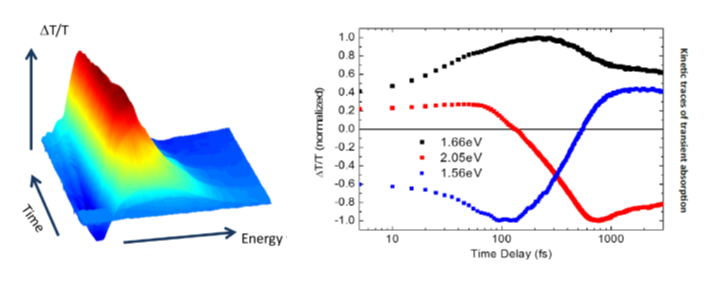We are interested in the ultrafast photophysics of perovskites, since an understanding of the photophysical processes in the femtosecond to microsecond regime after absorption of a photon is vital to maximise the potential application in solar cells, light emitting diodes and lasing structures.
We use techniques like ultrafast transient absorption and ultrafast photoluminescence to study how photo-excited charges are formed and recombine in thin films of pristine perovskite and, in combination with energy or charge acceptor layers, in multilayer structures. We are able to observe photophysics within the first femtoseconds after excitation, which gives information about thermalization and relaxation processes. We find that free charge carriers are formed within the first picosecond after excitation in the archetypical methylammonium lead halide perovskite, which is used in highly efficient solar cells. The formed charge carriers can recombine with radiative efficiencies above 50% and lifetimes in the region of 100s of nanoseconds (link to: J. Phys. Chem. Lett., 2014, 5 (8), pp 1421–1426, DOI: 10.1021/jz5005285).

These long lifetimes and high efficiencies allowed us to fabricate the first optically laser cavity, which uses an organic-inorganic lead-halide perovskite as gain medium (LEDs and lasing). We are also very interested to understand how changes in chemical composition affect the photophysics of lead-halide perovskite materials.
